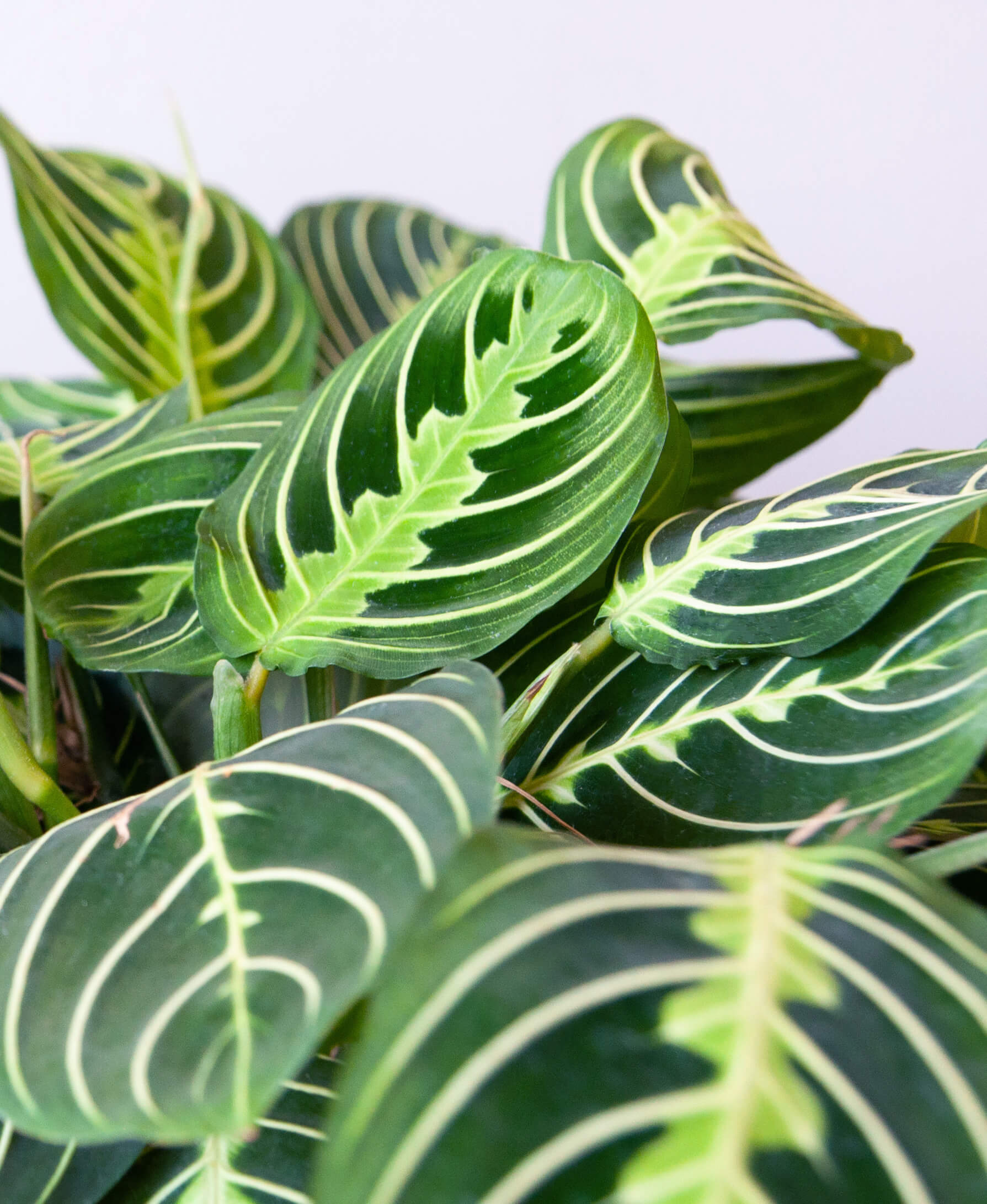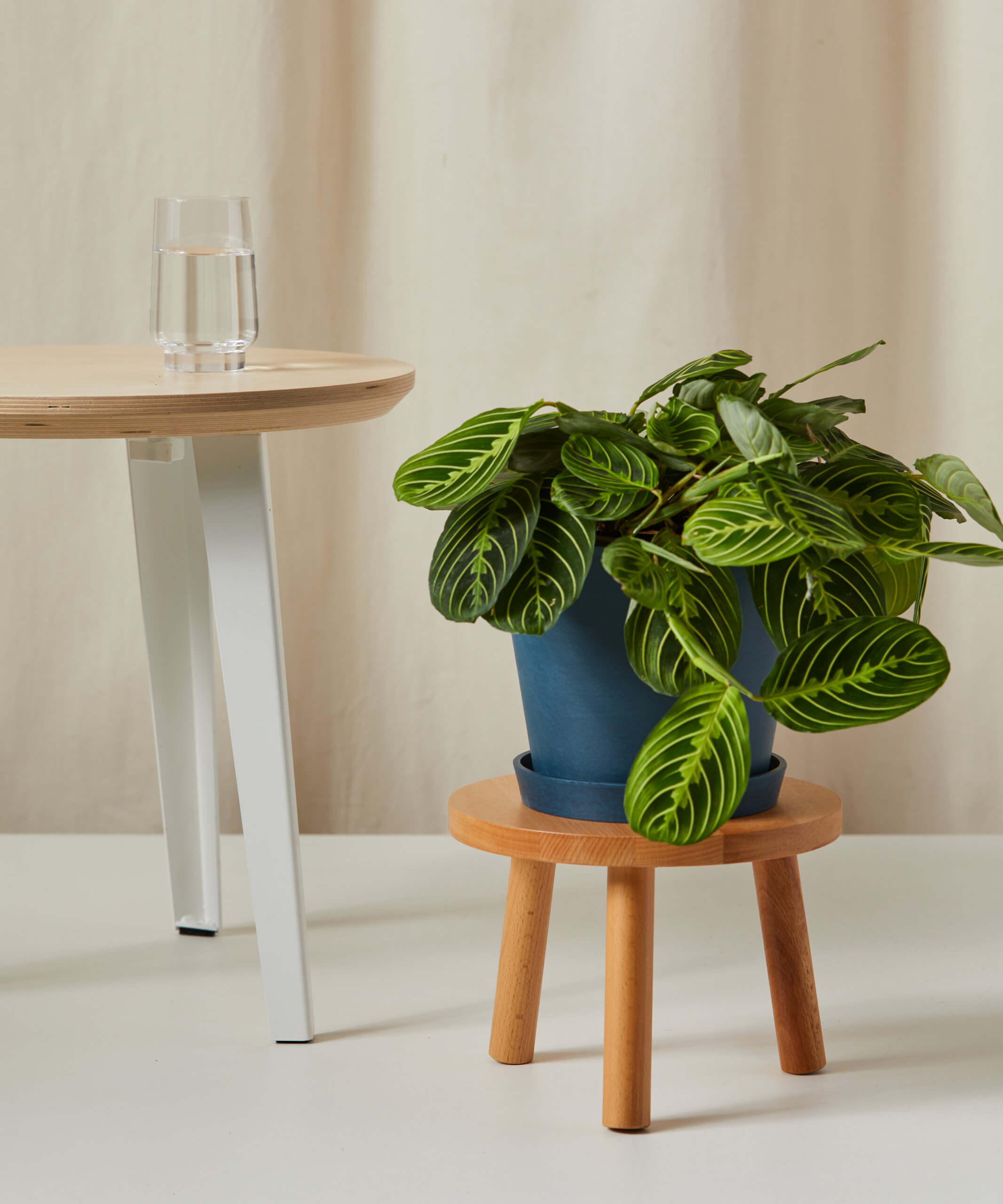Prayer plants, known for their brightly colored, distinctly patterned leaves, are beloved houseplants. However, nothing is more distressing for prayer plant owners than noticing brown spots marring the foliage. If left untreated, these unsightly blemishes can spread, causing leaves to yellow, wilt, and fall off.
What makes prayer plants get brown spots? Problems with watering, sunburn, pests, and fungal diseases are some of the most common reasons. The good news is that you can get your prayer plant healthy again if you take the right care of it and act quickly.
Common Causes of Brown Spots on Prayer Plants
Here are the most frequent reasons prayer plant leaves develop brown spots
Improper Watering
Too much or too little water can cause brown spotting on prayer plants These tropical plants prefer consistently moist (but not soggy) soil Underwatering causes leaves to dry out and brown spots to form. Overwatering can lead to root rot, preventing roots from taking up water and nutrients. Prayer plants are also sensitive to tap water, which contains minerals that build up in the soil. Use filtered, distilled, or rainwater instead.
Sunburn
Prayer plants do best in bright, indirect light. Too much direct sunlight, on the other hand, burns the leaves, leaving brown spots with yellow halos around them. Move plants back from sunny windows. Leaf scorch can also occur if light levels change abruptly. Transition prayer plants slowly to avoid shock.
Pests
Sucking insects like spider mites, mealybugs, and aphids feed on plant fluids, causing stippling, spots, or discoloration. Check leaf undersides for tiny pests Treat with horticultural oil or insecticidal soap Severe infestations may require pesticides. Isolate affected plants.
Bacterial and Fungal Diseases
Leaf spot, anthracnose, and other fungal diseases cause spots on prayer plant leaves. High humidity and crowded conditions promote disease. Improve air circulation. Remove affected leaves and treat with neem oil or fungicides. Disinfect tools after use. Water early so plants dry out during the day.
Fluoride Toxicity
Fluoride in municipal tap water and some fertilizers accumulates in prayer plant leaf tips and margins, leading to marginal leaf scorch. Use distilled or rainwater. Leach pots monthly to remove fertilizer buildup. Supplement with calcium to bind excess fluoride.
Mineral Imbalances
Insufficient nutrients like nitrogen, calcium, magnesium, and iron show up as spots and chlorosis (pale, yellowing leaves). Fertilize prayer plants regularly with a balanced houseplant food. For stubborn spots, use a micronutrient supplement.
Cold Damage
Prayer plants are sensitive to cold. Exposure to drafts or sudden temperature drops causes brown spots surrounded by pale halos on the leaves. Avoid drafty windows and doors. Move plants away from air conditioner vents. Insulate pots in winter.
How to Treat Brown Spots on Prayer Plants
To save your prayer plant, you need to find and treat brown spots as soon as possible. Take these steps:
-
Use clean, sharp scissors or shears to cut off leaves and stems that are badly hurt. Remove debris to prevent disease spread.
-
Check soil moisture and drainage; repair watering issues. Prayer plants like consistently damp soil.
-
Wash leaves gently with water to dislodge pests; spray neem oil or insecticidal soap.
-
Increase airflow and space between plants to prevent fungal disease.
-
Apply fungicide to remaining foliage; repeat per label instructions.
-
Leach soil to remove mineral buildup; use distilled or rainwater.
-
Move plant away from direct sun, heat vents, drafts, and cold.
-
Fertilize with a balanced liquid fertilizer to correct any nutrient deficiencies.
-
Prune only lightly while plant recovers; avoid stressing it further.
-
Monitor daily and remove any new brown-spotted leaves.
With prompt treatment and optimal care, your prayer plant should make a full recovery. Going forward, ensure it gets the proper soil moisture, humidity, light, and nutrients it needs to stay healthy and thriving for years to come!

Spots on your Prayer Plant can be alarming, but don’t worry. It’s likely an easy f Spots on a Red Prayer Plant are often caused by the quality of your tap water or a fungal disease.

Water Quality
Most often, yellowing leaves and spots on Prayer Plants are caused by a water quality issue. There may be too much fluoride, salt or chlorine in your tap water–especially if you use a water softener. Use distilled water to water your Prayer Plant or leave a pitcher of tap water out overnight so the minerals can evaporate before you water it. When you water your plant, make sure the water does not splash onto the leaves. Use lukewarm water and allow it to flow freely from the bottom of the pot into your sink or the plant’s saucer. Never allow any water to accumulate in the saucer; Prayer plants do not like “wet feet. ” Water in the morning so the plant has the day hours to dry down a bit. Your plant should be placed in an area with bright indirect light until it recovers. Fungus.
If the yellow spots spread and become tan with yellow halos, fungus may have set in. An application of a general houseplant fungicide can kill active fungal disease and prevent future outbreaks. Follow the directions on the bottle carefully.
A spray bottle of water mixed with one to two tablespoons of baking soda and one to two teaspoons of mineral oil can also be used to make your own fungicide. Shake the solution well and then spray all areas of the plant that are infected. Repeat daily until no new spots appear.

Identifying Brown Spots on Your Red Prayer Plant
When the vibrant leaves of your Red Prayer Plant start sporting brown spots, its a signal to play plant detective. These spots are more than mere blemishes; theyre clues to underlying issues.
Tips to avoid Brown leaves on Maranta
FAQ
How do I treat brown spots on my prayer plant?
Humidity is like the secret handshake for these tropical beauties. They thrive in higher humidity, so consider using a pebble tray or a humidifier to keep the air around them moist. With this, you can avoid those annoying brown spots that appear when the air is as dry as a stand-up comedian’s jokes.
Why is my prayer plant browning?
Low humidity can also turn Prayer Plant leaves brown, so keep the humidity inside at least 200%.
Can plants recover from brown spots?
Whatever the cause, brown spots won’t turn back to green so you may want to trim off affected leaves, to make your plant look nicer.
What does an overwatered prayer plant look like?
If you overwater your plant you’ll notice: a. The plant’s leaves can look yellow, and the tips of the leaves often have yellow-brown spots. b. If the situation is serious, severe drooping and curling of the leaves may be observed.
